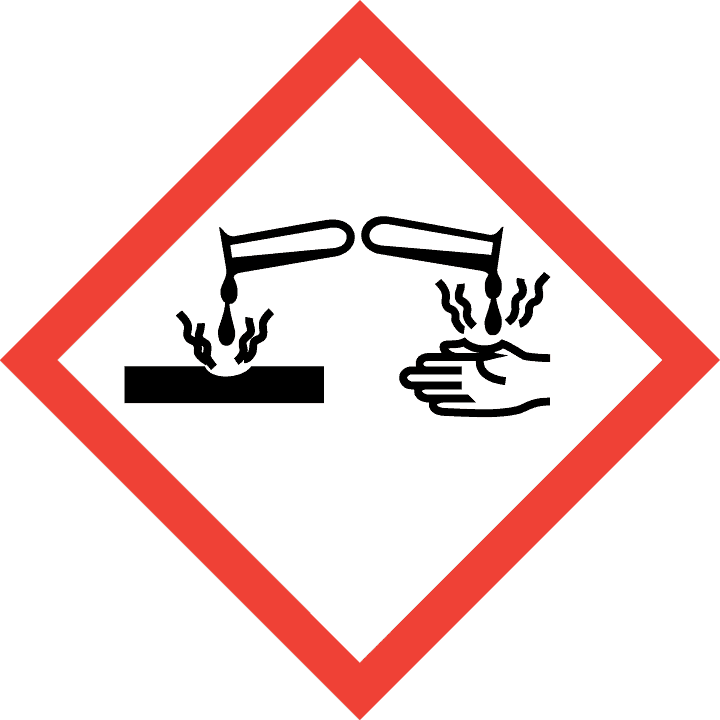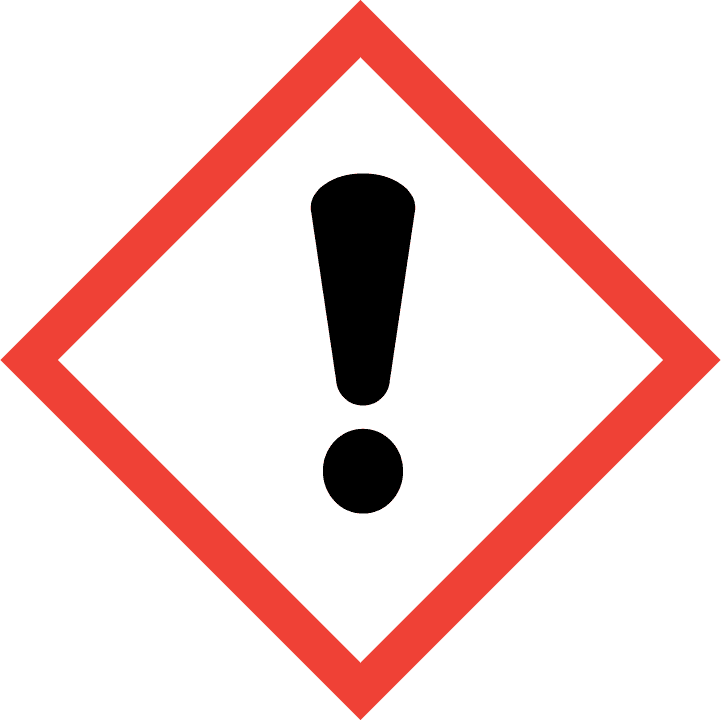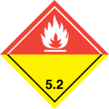|
SAFETY DATA SHEET according to Regulation 1907/2006 amended by 2020/878/EU
Product name: Cure It Evo Primer Part B
Creation date: 6.3.2020 ·
Revision: 28.10.2021 ·
Version: 1
|
 |
1. Identification of the substance/mixture and of the company/undertaking

chemius.net/o14bb
1.1. Product identifier
Product name
Cure It Evo Primer Part B
Product code
[UFI: 0J10-002W-N001-AAXD]
1.2. Relevant identified uses of the substance or mixture and uses advised against
Relevant identified uses
Hardener for Cure It resin and topcoat.
Uses advised against
Do not use for purposes other than those prescribed.
1.3. Details of the supplier of the safety data sheet
Supplier
G&B Northwest Ltd
Address: Giants Hall Farm, WN6 8RY Wigan, United Kingdom
Phone: +44 (0)1942 518150
E-mail: technical@cureit.uk.com
| |
1.4. Emergency telephone number
+44 (0)1942 518150 Mon-Friday 8.30am – 4.30pm
2. Hazards identification
2.1 Classification of the substance or mixture
Classification according to Regulation (EC) No 1272/2008 (CLP)
Org. Perox. D; H242 Heating may cause a fire.
Acute Tox. 4; H302 Harmful if swallowed.
Skin Corr. 1B; H314 Causes severe skin burns and eye damage.
2.2 Label elements
2.2.1. Labelling according to Regulation (EC) No 1272/2008 [CLP]
Signal word: Danger
H242 Heating may cause a fire.
H302 Harmful if swallowed.
H314 Causes severe skin burns and eye damage.
P233 Keep container tightly closed.
P235 Keep cool.
P262 Do not get in eyes, on skin, or on clothing.
P280 Wear protective gloves/protective clothing/eye protection/face protection.
P303 + P361 + P353 IF ON SKIN (or hair): Take off immediately all contaminated clothing. Rinse skin with water [or shower].
P305 + P351 + P338 IF IN EYES: Rinse cautiously with water for several minutes. Remove contact lenses, if present and easy to do. Continue rinsing.
P315 Get immediate medical advice/attention.
P501 Dispose of contents/container in accordance with national regulation.
2.2.2. Contains:
methyl ethyl ketone peroxide
2.2.3. Special provisions
Keep/store away from clothing/strong acids, bases, heavy metals salts and other reducing substances/combustible materials.
2.3. Other hazards
The substances in the mixture does not meet the PBT criteria according to REACH, Annex XIII
3. Composition/information on ingredients
3.1. Substances
For mixtures see 3.2.
3.2. Mixtures
| Name |
CAS
EC
Index |
% |
Classification according to Regulation (EC)
No 1272/2008 (CLP) |
Specific Conc. Limits |
Classification according to directive 67/548/EEC or 99/45/EC |
REACH Registration No. |
| methyl ethyl ketone peroxide |
1338-23-4
215-661-2
- |
25-<35 |
Org. Perox. D; H242
Acute Tox. 4; H302
Skin Corr. 1B; H314
Acute Tox. 4; H332 |
|
E; R2
O; R7
C; R34
Xn; R22 |
- |
| hydrogen peroxide [B] |
7722-84-1
231-765-0
008-003-00-9 |
1,5-<2 |
Ox. Liq. 1; H271
Acute Tox. 4; H302
Skin Corr. 1A; H314
Acute Tox. 4; H332 |
Ox. Liq. 1; H271: C ≥ 63 %
Ox. Liq. 2; H272: 50 % ≤ C < 63 %
Skin Corr. 1A; H314: C ≥ 70 %
Skin Corr. 1B; H314: 50 % ≤ C < 70 %
Skin Irrit. 2; H315: 35 % ≤ C < 50 %
Eye Dam. 1; H318: C ≥ 8 %
Eye Irrit. 2; H319: 5 % ≤ C < 8 %
STOT SE 3; H335: C ≥ 35 % |
O; R8
C; R35
Xn; R20/22
R5 |
- |
| 2-methylpentane-2,4-diol |
107-41-5
203-489-0
603-053-00-3 |
1-<1,5 |
Skin Irrit. 2; H315
Eye Irrit. 2; H319 |
|
Xi; R36/38 |
- |
Notes for substances:
| B |
Some substances (acids, bases, etc.) are placed on the market in aqueous solutions at various concentrations and, therefore, these solutions require different classification and labelling since the hazards vary at different concentrations.
In Part 3 entries with Note B have a general designation of the following type: "nitric acid … %".
In this case the supplier must state the percentage concentration of the solution on the label. Unless otherwise stated, it is assumed that the percentage concentration is calculated on a weight/weight basis. |
4. First aid measures
4.1. Description of first aid measures
General notes
Remove contaminated clothing. Never give anything by mouth to an unconscious person. Place patient in recovery position and ensure airway patency. When in doubt or if feeling unwell seek medical assistance. Show the safety data sheet and label to the physician.
No action shall be taken involving any personal risk or without suitable training. When it is suspected, that there may still be harmful vapours/fumes present in the air, respiratory protection (mask; self contained breathing apparatus) must be used. Wash contaminated clothing with water before removing or use gloves. It may be dangerous to the person providing aid to give mouth-to-mouth resuscitation.
Following inhalation
Remove patient to fresh air - move out of dangerous area. In case of unconsciousness bring patient into stable side position and seek medical attention. Seek medical help immediately. If breathing is irregular or respiratory arrest occurs provide artificial respiration. Keep at rest in a position comfortable for breathing.
Following skin contact
Take off all contaminated clothing. Wash affected skin areas thoroughly with plenty of water and soap. If symptoms develop and persist, seek medical attention.
Following eye contact
Immediately flush eyes with running water, keeping eyelids apart. After 5 minutes of rinsing, remove contact lenses, if present, and continue rinsing. Consult a physician immediately!
Following ingestion
Do not induce vomiting! Rinse mouth and drink plenty of water (only if the person is conscious). If vomiting occurs, the patient should hold the head lower than the hips, because it reduces the possibility of aspiration. Immediately consult a doctor. Show the physician the safety data sheet or label.
4.2. Most important symptoms and effects, both acute and delayed
Inhalation
Excessive exposure to spray mist, fog, or vapours may cause respiratory irritation.
Symptoms may include cough, sneezing, nasal discharge, headache, hoarseness, nose and throat pain.
Skin contact
May cause localised redness, swelling, itching, intense pain, blistering, ulceration and tissue destruction.
Eye contact
Redness, pain, burning sensation, tearing, can cause permanent damage to the eyes.
May cause corneal injury.
Ingestion
May cause abdominal discomfort.
May cause nausea/vomiting and diarrhea.
Harmful to health.
If ingested, may cause burns of the mouth and throat, as well as perforation of the esophagus and stomach.
4.3. Indication of any immediate medical attention and special treatment needed
Treat symptomatically. Have eye wash facilities in place close to the operators’ work area to provide immediate first aid prior to medical attention. Severe cases of eye contact and ingestion should receive medical attention immediately.
5. Firefighting measures
5.1. Extinguishing media
Suitable extinguishing media
Carbon dioxide. Dry chemical powder. Water spray. Alcohol resistant foam. Use extinguishing measures that are appropriate to local circumstances and the surrounding environment.
Unsuitable extinguishing media
Full water jet.
5.2. Special hazards arising from the substance or mixture
Hazardous combustion products
In case of a fire toxic gases can be generated; do not inhale gases/smoke.
5.3. Advice for firefighters
Protective actions
In case of fire or heating do not breathe fumes/vapours. Cool containers at risk with water spray. If possible remove containers from endangered area. No action shall be taken involving any personal risk or without suitable training.
Special protective equipment for firefighters
Firefighters should wear appropriate protective clothing for firefighters (including helmets, protective boots and gloves) (EN 469) and self-contained breathing apparatus (SCBA) with a full face-piece (EN 137).
Additional information
Contaminated firefighting water must be disposed of in accordance with the regulations; do not allow to reach the sewage system.
6. ACCIDENTAL RELEASE MEASURES
6.1. Personal precautions, protective equipment and emergency procedures
6.1.1. For non-emergency personnel
Protective equipment
Use personal protective equipment (Section 8).
Emergency procedures
Ensure adequate ventilation. Keep away from sources of ignition and/or heat; No smoking! Prevent access to unprotected personnel. No action shall be taken involving any personal risk or without suitable training. Evacuate the danger zone. Do not breathe vapour or mist. Avoid contact with skin, eyes and clothing.
6.1.2. For emergency responders
During intervention, use personal protective equipment (Section 8).
6.2. Environmental precautions
Do not allow product to reach water/drains/sewage systems or permeable soil. In case of release into the environment, inform the relevant authorities.
6.3. Methods and material for containment and cleaning up
6.3.1. For containment
Stem the spill if this does not pose risks.
6.3.2. For cleaning up
Absorb product (with inert material), collect it in special container and dispose it to a licensed hazardous-waste disposal contractor. Prevent release into the sewer, water, basements or confined areas. Dispose in accordance with applicable regulations (see Section 13).
6.3.3. Other information
See Section 7: safe handling. See Section 11 for additional information on health hazards. Dispose of in accordance with the instructions from Section 13.
6.4. Reference to other sections
See also Sections 8 and 13.
7. Handling and storage
7.1. Precautions for safe handling
7.1.1. Protective measures
Measures to prevent fire
Ensure adequate ventilation. Take precautionary measures against static discharges. Keep away from sources of ignition - no smoking. Use spark-proof tools.
Measures to prevent aerosol and dust generation
Use general or local exhaust ventilation to prevent inhaling vapours and aerosols.
Measures to protect the environment
Do not discharge into drains, surface water and soil. After use immediately close container tightly.
7.1.2. Advice on general occupational hygiene
Do not eat, drink or smoke while working. Do not breathe vapours/mist. Use good personal hygiene practices – wash hands at breaks and when done working with material. Avoid contact with skin, eyes and clothes. Remove contaminated clothes and wash them before reuse. Wear suitable protective equipment; see Section 8.
7.2. Conditions for safe storage, including any incompatibilities
7.2.1. Technical measures and storage conditions
Protect from open fire, heat and direct sunlight. Keep away from food, drink and animal feeding stuffs. Keep in a cool, dry and well ventilated place. Store below 30°C. Keep away from incompatible products (see section 10).
7.2.2. Packaging materials
Store only in original container.
7.2.3. Requirements for storage rooms and vessels
Close opened containers after use. Put the containers upright to prevent from leaking. Do not store in unlabelled containers.
7.2.5. Further information on storage conditions
-
7.3. Specific end use(s)
Recommendations
See identified uses in Section 1.2.
Industrial sector specific solutions
-
8. Exposure controls/personal protection
8.1. Control parameters
8.1.1. Occupational exposure limit values
8.1.2. Information on monitoring procedures
BS EN 14042:2003 Title Identifier: Workplace atmospheres. Guide for the application and use of procedures for the assessment of exposure to chemical and biological agents. BS EN 482:2021 Workplace exposure. Procedures for the determination of the concentration of chemical agents. Basic performance requirements.
8.1.3. DNEL/DMEL values
No information.
8.1.4. PNEC values
No information.
8.2. Exposure controls
8.2.1. Appropriate engineering control
Substance/mixture related measures to prevent exposure during identified uses
Do not breathe vapours/aerosols. Use good personal hygiene practices – wash hands at breaks and when done working with material. Handle in accordance with good industrial hygiene and safety practice. Do not eat, drink or smoke while working. Avoid contact with skin, eyes and clothes.
Organisational measures to prevent exposure
Remove all contaminated clothes immediately and wash them before reuse. Keep eyewash bottles or personal eyewash units and emergency showers available.
Technical measures to prevent exposure
Provide good ventilation and local exhaust in areas with increased concentration. Keep away from food, drink and animal feeding stuffs.
8.2.2. Personal protective equipment
Eye and face protection
Wear tight fitting protective goggles and/or face protection (EN 166:2001).
Hand protection
Protective gloves (EN 374). The penetration time is determined by the protective glove manufacturer and must be observed. Observe the manufacturer's instructions regarding the use, storage, maintenance and replacement of gloves. In case of damage or at the first signs of wear and tear, change the gloves immediately. The selection of the suitable gloves does not only depend on the material, but also on further marks of quality and varies from manufacturer to manufacturer.
Skin protection
Cotton protective clothing and shoes that cover the entire foot (EN ISO 20345:2011). At high risk of skin exposure chemical suits (EN ISO 6530:2005) and boots may be required (EN ISO 20345:2012). Immediately wash contaminated clothing before reuse.
Respiratory protection
Protective masks (EN 136) or half masks (EN 140) with filter A (EN 14387).
8.2.3. Environmental exposure controls
Technical measures to prevent exposure
Do not allow product to reach drains, sewage systems or ground water.
9. PHYSICAL AND CHEMICAL PROPERTIES
9.1. Information on basic physical and chemical properties
| - |
Physical state: |
liquid |
| - |
Colour: |
colourless |
| - |
Odour: |
slight, mint-like |
Important health, safety and environmental information
| - |
pH |
4 – 7 |
| - |
Melting point/freezing point |
No information. |
| - |
Initial boiling point/boiling range |
No information. |
| - |
Flash point |
> 80 °C |
| - |
Evaporation rate |
No information. |
| - |
Flammability (solid, gas) |
No information. |
| - |
Explosion limits (vol%) |
No information. |
| - |
Vapour pressure |
No information. |
| - |
Vapour density |
No information. |
| - |
Density |
Density:
1,11 – 1,13 g/cm3 at 20 °C |
| - |
Solubility |
No information. |
| - |
Partition coefficient |
No information. |
| - |
Auto-ignition temperature |
No information. |
| - |
Decomposition temperature |
≥ 60 °C (SADT (UN test H.4)) |
| - |
Viscosity |
Dynamic:
18 – 22 mPas |
| - |
Explosive properties |
No information. |
| - |
Oxidising properties |
Organic peroxide |
| - |
Particle characteristics |
No information. |
10. STABILITY AND REACTIVITY
10.1. Reactivity
Stable under recommended transport or storage conditions.
10.2. Chemical stability
In case of contact with incompatible materials, it may also decompose at a lower temperature than SADT.
10.3. Possibility of hazardous reactions
The vapours may also form explosive mixtures with the air.
10.4. Conditions to avoid
Protect from heat, direct sunlight, open fire, sparks.
10.5. Incompatible materials
Accelerators;
Strong acids.
Strong bases. Heavy metals. Heavy metal salts. Reducing agents. Avoid impurities (e.g. rust, dust, ash) risk of decomposition.
10.6. Hazardous decomposition products
Under normal use conditions no hazardous decomposition products are expected. In case of fire/explosion vapours/gases that pose a health hazard are released.
11. Toxicological information
11.1. Information on hazard classes as defined in Regulation (EC) No 1272/2008
(a) Acute toxicity
| Name | Exposure route | Type | Species | Time | Value | Method | Remark |
|---|
| For product | oral | LD50 | rat | | 1017 mg/kg | | |
| For product | inhalation | LC50 | rat | | 17 mg/l | | |
| For product | dermal | LD50 | rat | | 4000 mg/kg | | |
| Additional information: Harmful if swallowed. |
(b) Skin corrosion/irritation
| Additional information: Causes severe skin burns. |
(c) Serious eye damage/irritation
| Additional information: Causes serious eye damage. |
(d) Respiratory or skin sensitisation
| Additional information: The product is not classified as sensitising. |
(e) (Germ cell) mutagenicity
No information.
(f) Carcinogenicity
No information.
(g) Reproductive toxicity
No information.
Summary of evaluation of the CMR properties
The product is not classified as carcinogenic, mutagenic or toxic for reproduction.
(h) STOT-single exposure
| Additional information: STOT SE (single exposure): Not classified. |
(i) STOT-repeated exposure
| Additional information: STOT RE (repeated exposure): Not classified. |
(j) Aspiration hazard
| Additional information: Aspiration hazard: Not classified. |
11.2. Information on other hazards
11.2.1. Endocrine disrupting properties
No information.
11.2.2. Other information
No information.
12. Ecological information
12.1. Toxicity
12.1.1. Acute (short-term) toxicity
For product
| Type |
Value |
Exposure time |
Species |
Organism |
Method |
Remark |
| LC50 |
44,2 mg/L |
96 h |
fish |
Poecilia reticulata |
|
|
| EC50 |
39 mg/L |
48 h |
crustacea |
Daphnia magna |
|
|
| EC50 |
5,6 mg/L |
72 h |
algae |
Pseudokirchneriella subcapitata |
|
|
| EC50 |
48 mg/L |
30 min |
bacteria |
|
|
|
12.1.2. Chronic (long-term) toxicity
No information.
12.2. Persistence and degradability
12.2.1. Abiotic degradation, physical- and photo-chemical elimination
No information.
12.2.2. Biodegradation
For product
| Type |
Rate |
Time |
Evaluation |
Method |
Remark |
| biodegradability |
|
|
Rapidly biodegradable. |
|
|
12.3. Bioaccumulative potential
12.3.1. Partition coefficient
No information.
12.3.2. Bioconcentration factor (BCF)
No information.
12.4. Mobility in soil
12.4.1. Known or predicted distribution to environmental compartments
No information.
12.4.2. Surface tension
No information.
12.4.3. Adsorption/Desorption
No information.
12.5. Results of PBT and vPvB assessment
This mixture contains no substance considered to be persistent, bioaccumulating nor toxic (PBT).
12.6. Endocrine disrupting properties
No information.
12.7. Additional information
For product
Product is not classified as dangerous for environment.
Do not allow undiluted product or large quantities of it to reach ground water, water bodies or sewage system.
13. Disposal considerations
13.1. Waste treatment methods
13.1.1. Product / Packaging disposal
Waste chemical
Do not allow product to reach drains/sewage systems. Disposal must be made according to official regulations: deliver it to authorised collector/remover/transformer of hazardous waste. Dispose of in accordance with applicable waste disposal regulation.
Packaging
Deliver completely emptied containers to approved waste disposal authorities. Uncleaned containers are classified as hazardous waste - they should be handled in the same manner as the contents. Dispose of in accordance with applicable waste disposal regulation.
13.1.2. Waste treatment-relevant information
-
13.1.3. Sewage disposal-relevant information
-
13.1.4. Other disposal recommendations
-
14. Transport information
14.1. UN number or ID number
UN 3105
14.2. UN proper shipping name
ORGANIC PEROXIDE TYPE D, LIQUID (methyl ethyl ketone peroxide)
14.3. Transport hazard class(es)
5.2
14.4. Packing group
Not applicable.
14.5. Environmental hazards
NO.
14.6. Special precautions for user
Limited quantities
125 ml
Tunnel restriction code
(D)
IMDG flashpoint
80 °C, c.c.
14.7. Maritime transport in bulk according to IMO instruments
Goods may not be carried in bulk in bulk containers, containers or vehicles.
15. Regulatory information
15.1. Safety, health and environmental regulations/legislation specific for the substance or mixture
- Regulation (EC) No 1907/2006 concerning the Registration, Evaluation, Authorisation and Restriction of Chemicals (REACH)(including last amendment Commission Regulation (EU) 2020/878)
- Regulation (EC) No 1272/2008 on classification, labelling and packaging of substances and mixtures
15.1.1. Information according 2004/42/EC about limitation of emissions of volatile organic compounds (VOC-guideline)
Not applicable.
15.2. Chemical Safety Assessment
A Chemical Safety Assessment has not been carried out.
Abbreviations and acronyms
ATE - Acute Toxicity Estimate
ADR - Agreement concerning the International Carriage of Dangerous Goods by Road
ADN - European Agreement concerning the International Carriage of Dangerous Goods by Inland Waterways
CEN - European Committee for Standardisation
C&L - Classification and Labelling
CLP - Classification Labelling Packaging Regulation; Regulation (EC) No 1272/2008
CAS# - Chemical Abstracts Service number
CMR - Carcinogen, Mutagen, or Reproductive Toxicant
CSA - Chemical Safety Assessment
CSR - Chemical Safety Report
DMEL - Derived Minimal Effect Level
DNEL - Derived No Effect Level
DPD - Dangerous Preparations Directive 1999/45/EC
DSD - Dangerous Substances Directive 67/548/EEC
DU - Downstream User
EC - European Community
ECHA - European Chemicals Agency
EC-Number - EINECS and ELINCS Number (see also EINECS and ELINCS)
EEA - European Economic Area (EU + Iceland, Liechtenstein and Norway)
EEC - European Economic Community
EINECS - European Inventory of Existing Commercial Substances
ELINCS - European List of notified Chemical Substances
EN - European Standard
EQS - Environmental Quality Standard
EU - European Union
Euphrac - European Phrase Catalogue
EWC - European Waste Catalogue (replaced by LoW – see below)
GES - Generic Exposure Scenario
GHS - Globally Harmonized System
IATA - International Air Transport Association
ICAO-TI - Technical Instructions for the Safe Transport of Dangerous Goods by Air
IMDG - International Maritime Dangerous Goods
IMSBC - International Maritime Solid Bulk Cargoes
IT - Information Technology
IUCLID - International Uniform Chemical Information Database
IUPAC - International Union for Pure Applied Chemistry
JRC - Joint Research Centre
Kow - octanol-water partition coefficient
LC50 - Lethal Concentration to 50 % of a test population
LD50 - Lethal Dose to 50% of a test population (Median Lethal Dose)
LE - Legal Entity
LoW - List of Wastes (see http://ec.europa.eu/environment/waste/framework/list.htm)
LR - Lead Registrant
M/I - Manufacturer / Importer
MS - Member States
MSDS - Material Safety Data Sheet
OC - Operational Conditions
OECD - Organization for Economic Co-operation and Development
OEL - Occupational Exposure Limit
OJ - Official Journal
OR - Only Representative
OSHA - European Agency for Safety and Health at work
PBT - Persistent, Bioaccumulative and Toxic substance
PEC - Predicted Effect Concentration
PNEC(s) - Predicted No Effect Concentration(s)
PPE - Personal Protection Equipment
(Q)SAR - Qualitative Structure Activity Relationship
REACH - Registration, Evaluation, Authorisation and Restriction of Chemicals
Regulation (EC) No 1907/2006
RID - Regulations concerning the International Carriage of Dangerous Goods by Rail
RIP - REACH Implementation Project
RMM - Risk Management Measure
SCBA - Self-Contained Breathing Apparatus
SDS - Safety data sheet
SIEF - Substance Information Exchange Forum
SME - Small and Medium sized Enterprises
STOT - Specific Target Organ Toxicity
(STOT) RE - Repeated Exposure
(STOT) SE - Single Exposure
SVHC - Substances of Very High Concern
UN - United Nations
vPvB - Very Persistent and Very Bioaccumulative
Key literature references and sources for data
-
List of relevant H phrases
H242 Heating may cause a fire.
H271 May cause fire or explosion; strong oxidiser.
H302 Harmful if swallowed.
H314 Causes severe skin burns and eye damage.
H315 Causes skin irritation.
H319 Causes serious eye irritation.
H332 Harmful if inhaled.

- Provided correct labelling of the product
- Compliance with the local legislation
- Provided correct classification of the product
- Provided adequate transport data
© BENS Consulting | www.bens-consulting.com
The information of this SDS is based on the present state of our knowledge and meets the requirements of EU and national
laws. The user’s working conditions however, are beyond our knowledge and control. The product is not to be used for purposes
other than those specified under Section 1 without a written permission. It remains the responsibility of the user to ensure that
the necessary steps are taken to meet the laws and regulations. Handling of the product may only be done by people above 18
years of age, who are satisfactorily informed of how to do the work, the hazardous properties and necessary safety precautions.
The information given in this SDS is to describe the product only in terms of health and safety requirements and should not,
therefore, be construed as guaranteeing specific properties.














